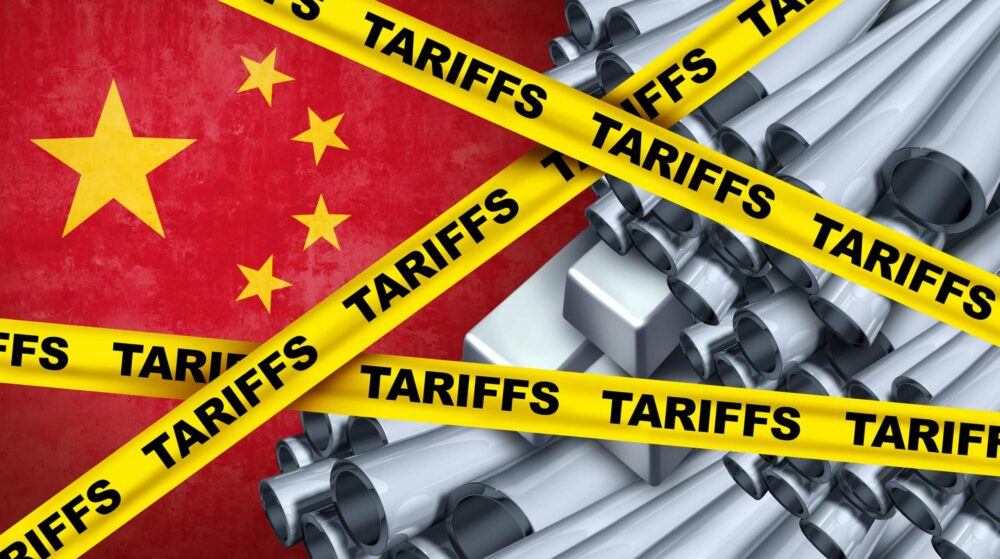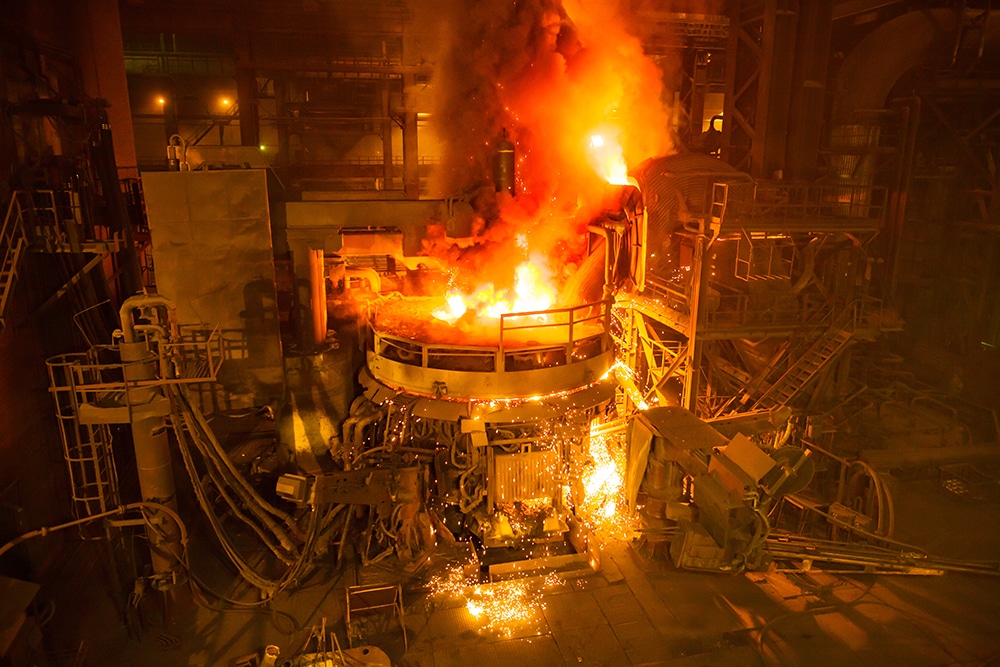Aluminum Trade War Heats Up: How Will China and India React to U.S. Tariffs?

The world now waits to see how two aluminum market leaders, China and India, will react to U.S. President Donald Trump’s imposition of 25% tariffs on metal imports. Between them, these two nations produce about 50 million metric tons (MT) of aluminum yearly. However, China significantly outpaces India, alone producing about 43 MT per year.
It is also worth noting that both countries also consume a vast percentage of the aluminum they make. Nevertheless, the tariffs have the potential to dramatically reshape the current global aluminum market.
Want to keep tabs on tariffs and shifts in the aluminum market? MetalMiner’s MMI report includes 9 metal price reports and can be used as an economic indicator for contracting, price forecasting and predictive analytics. Sign up here.
Impact of Tariffs on India
For India, Trump’s decision to increase the aluminum import tax from the existing 10% to 25% will likely impact Indian exporters to some degree, as the U.S. figures into their top export markets. Exports actually exceeded US $1 billion a few years ago, but in 2023-24, it was $946 million. Nevertheless, this is still a massive increase from the 2016-17 figure of $350 million.

For now, there are mixed reactions from market analysts and experts as to how the tariffs will impact India’s steel and aluminum sectors. The Indian government, for its part, has sought to play the circumstances down. And while some media reports and analysts have claimed that the increased aluminum tariff may not hurt Indian producers as much as steel firms, others have contradicted this point of view.
Aluminum tariffs could reshape the global aluminum market. Stay ahead of the curve with MetalMiner’s weekly newsletter and get exclusive access to important, weekly aluminum market intelligence.
Experts Weight Effects on Aluminum, Steel
Quoting from a report by analyst firm CareEdge Ratings, the Indian Express said that of the approximate 40% of aluminum exported by India, the U.S. accounts for about 8%. Therefore, the tariff hike will most likely impact export volumes for aluminum more than steel.
What’s of even more concern, the report said, was that India was one of the largest suppliers of aluminum conductors to the U.S., which included cables and stranded wires for electrical products. As a result, the increased tariff on aluminum from 10% to 25% will negatively impact these firms as well as any companies that are U.S.-export centric.

Some engineering exporters have already appealed to the Indian government to cut tariffs on some of the U.S. goods imported into India in an effort to establish a more favorable trade relationship with the world’s leading nation. One Reuters report quoting Pankaj Chadha, Chairman of the Engineering Export Promotion Council, estimated that about US $7.5 billion of shipment out of India’s $20 billion annual engineering goods exports could be affected by the new tariffs.
Could India’s Aluminum Market Be Spared?
Meanwhile, other experts feel the overall impact on the Indian aluminum sector may be limited. They feel India might avoid major impact despite the U.S. being one of its top two metal importers. According to a Moneycontrol analysis, both India and China have more diversified steel export markets than other nations. In 2023, only 55% of India’s steel exports went to its top 10 trading partners, compared to the global average of 86.5%.

Another report quoting experts from SBI Research predicted that the plan to impose tariffs would lead to a roughly 3% drop in exports. This could be countered by higher exports in addition to the re-working of some of India’s Free Trade Agreements with other countries, adjustments to supply chains, and other policy changes. Don’t panic about tariffs, learn how to manage tariff threats with MetalMiner’s free comprehensive steel & aluminum tariff guide.
Impact On China
China is still mulling over its response to the new metal tariffs. However, it has made it clear in no uncertain terms that retaliation is coming. Foreign Ministry spokesperson Mao Ning told the press that Beijing would initiate all necessary steps to safeguard its legitimate rights while also stating that the new tariffs go against World Trade Organization guidelines.
What may have irked the Chinese is Trump’s announcement that there would be no exemptions whatsoever to the new tariffs, even where allies were concerned. In the past, China and other countries were able to exploit such loopholes for their own benefit. A few weeks ago, China retaliated to the Trump administration adding another 10% duty on Chinese imports by imposing 10-15% tariffs on U.S farm goods.
India-Russia Relationship on Aluminum
The third country on the list of top aluminum global producers, Russia, is grappling with a problem of a different kind. Russia accounts for about 5% of global aluminum production. However, following its invasion of Ukraine over three years ago, its imports to the EU dropped considerably.
It currently accounts for about 6% of European imports of primary aluminum, which is half of the 2022 levels. Reports now indicate that other countries, including India have moved in to fill the gap in the aluminum market.

Russia, meanwhile, continues to ship aluminum to China, the world’s biggest consumer. Experts say that Beijing imported 263,000 tons of primary aluminum from Russia in the first three quarters of 2024, and that the trend will continue in 2025
Stop overpaying for unnecessary metal price points. Get only the metal price points you need with MetalMiner Select. Learn more.
Russia Moves to Shore Up Alumina Supply
To compensate for the falling alumina volumes, Russian aluminum giant Rusal recently announced it would purchase a 26% stake in Indian alumina refinery owner Pioneer Aluminium Industries Limited for US $243.75 million. After the first stage of investment, Rusal plans to bump its stake up to 50%. Pioneer operates a metallurgical grade alumina refinery located in South India, with a capacity of 1.5 MT per year.
Many industry insiders see the move as Rusal reducing its dependence on raw materials sourced from third parties. Until the end of 2024, the company continued to purchase over a third of the alumina it required on global markets at exchange prices, which was affecting its production margins.
